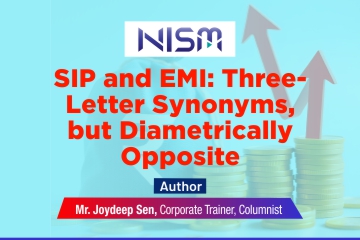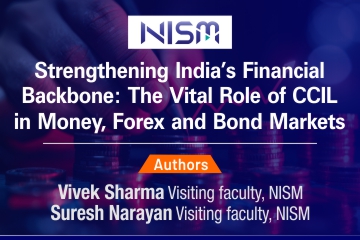
As investors, we often judge performance on monthly (MoM), Quarterly (QoQ) and year-on-year (YoY) statistics. It feels natural to look back at how our portfolio did in the immediate past including past 3,6,12 months. But wealth is not created in tidy annual snapshots. True compounding only reveals itself over decades.
For Indian investors, this lesson is even more relevant today. With the economy set to double in size over the next 5-7 years, the greatest rewards will accrue to those who can hold on through the noise and let time do the heavy lifting.
The Short-Term Trap
Markets in the short run swing wildly with headlines like elections, global oil prices, central bank commentary, geopolitical events, political instability, quarterly results. These movements often appear significant when viewed in isolation and would look very sudden, negative and often repetitive, but they rarely impact the long-term earnings power of India’s strongest companies.
Relying on YoY returns alone often leads to:
What the Long-Term Data Tells Us
The message is clear: Its Boring, but it works, the longer the horizon, the lesser the role of luck and the greater the power of fundamentals.
Why Decades Matter for India
India’s structural drivers are best understood over 10–20 year lenses:
How to Separate Noise from Fundamentals
The Power of Compounding
₹10 lakh invested at 12% CAGR grows to:
The real magic happens in the second and third decade. That is when compounding turns exponential. The first decade is to test your patience, the second is to test your discipline and the third decade is to reward your patience.
Closing Thought
India’s story is not about quarters or even years – it is about decades. GDP will double, corporate earnings will multiply, and investors who stay the course will witness the true power of compounding. Compounding is no doubt the only lesson worth learning and no less than a wonder in the world of investing.
YoY returns may create headlines. But decadal returns create wealth. The patient investor, who filters noise and stays invested in India’s growth story, will be the real beneficiary.
Author: Mr. Biharilal Deora, Director Abakkus

SIP and EMI: three-letter synonyms, but diametrically opposite You are king of your money or slave to your expenses SIP…

Watching the finals of the ICC Women’s World Cup Final, where the Indian Women’s Cricket Team defeated the South African…

In the complex architecture of India’s financial system, very few institutions have had as profound and far-reaching an impact as…
© 2025 National Institute of Securities Markets (NISM). All rights reserved.